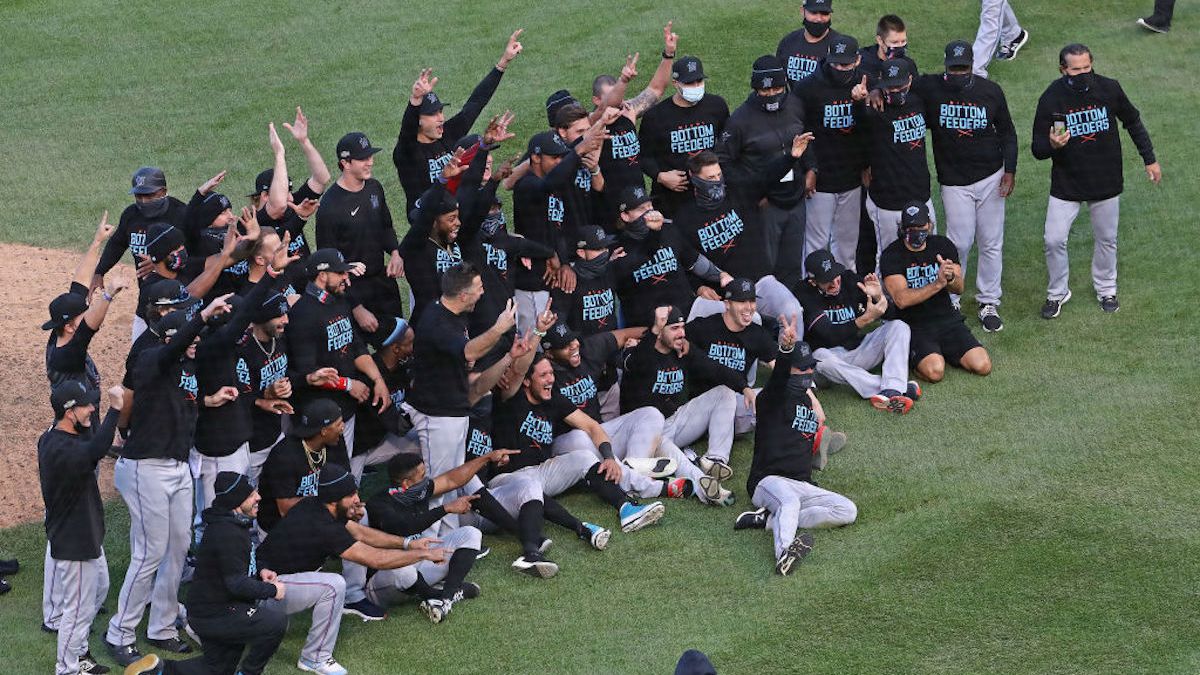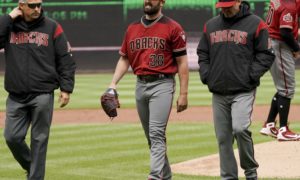How Good Were the 2020 Miami Marlins?

Run differential doesn’t always tell the whole story when it comes to a team’s performance. Still, when you see the 2020 Miami Marlins making the postseason with a run differential of -41, you begin to wonder just how they managed to do it.
Indeed, that -41 rating was third worst in the National League, bested (worsted?) only by that of the Colorado Rockies (26-34, -78 differential) and the woeful Pittsburgh Pirates (19-41, -79 differential). Pythagorean win-loss suggests the Marlins should have won five fewer games than they did.
This five-game deviation from the expected mark was the most extreme of any team in Major League Baseball. In a normal year, it would be a significant difference. In a 60-game sprint? Pretty remarkable.
So, how did Miami get to the playoffs a year after losing 105 games? Let’s dive deeper into their season and see what we can find.
ONE-RUN GAMES
Miami fared well in one-run games this season, posting an 11-8 record. Only five teams in baseball matched or exceeded that +3 differential: Tampa Bay (an astounding +9), Milwaukee (+6), Atlanta (+5), Minnesota (+4), and Toronto (+3). All joined the Marlins in the postseason. Performance in close games in any season can be crucial to determining a team’s success or failure. This season, it certainly seems like it pushed Miami over the top.
DOUBLEHEADERS
The Marlins did exceedingly well in seven-inning doubleheaders, a mainstay in 2020 due to pandemic-related concerns. Miami went 10-4 in doubleheaders this season, making hay against their division rivals. As the top two teams from each division automatically made the playoffs in this year’s expanded format, capitalizing in this way was critical for the club.
What do we make of this? It’s hard to say. That the Marlins achieved this record is commendable but attributing it to one or more factors is difficult. It is worth noting, however, that of the doubleheader games decided by three of fewer runs, Miami impressively went 7-1. This overwhelming good fortune lends itself to a discussion of the team’s…
TOP BULLPEN PERFORMERS
To win close games, you’re going to need contributions from your bullpen. Concerning the most-used relievers on the staff, Miami got that. Of relief pitchers making 10 or more appearances for the 2020 Miami Marlins, five of eight posted ERAs of 3.00 or lower.
Yimi Garcia (0.60 ERA, 0.93 WHIP, 11.4 K/9) and James Hoyt (1.23 ERA, 1.16 WHIP, 12.3 K/9) were the bullpen standouts, but Brad Boxberger (3.00 ERA) and in-season acquisition Richard Bleier (2.63 ERA) were serviceable options in their own right. Closer Brandon Kintzler (2.22 ERA) also performed capably in his role. His 12 saves were tied for fourth best in baseball and he was only saddled with two blown saves in 24 appearances.
To what extent this success is smoke-and-mirrors is worth scrutinizing. Kintzler, for one, may have overachieved when considering his 1.32 WHIP and anemic 5.2 K/9 rate, both alarming for a back-end option. Those numbers were indicative of the prevailing trend not just for the Marlins’ bullpen, but its entire pitching staff. Miami’s team 4.86 ERA and 1.45 WHIP put them in the league’s bottom third in both categories.
BLOWOUT GAMES
As much as individual ERAs may obscure unsavory peripherals, individual game scores may skew run differential. This effect stands to be magnified in a season less than half the length of a normal campaign, though the reverse may also be true.
At any rate, two games greatly inform the Marlins’ negative rating on the season. The first was a 29-9 shellacking at the hands of the Atlanta Braves on September 9 (and Miami briefly led in that game, too!). The second was a September 20 15-0 blanking by the Washington Nationals that mercifully was limited to seven innings as the second half of a twin billing. That’s what I call losing spectacularly.
Without those two black marks on the schedule, the Marlins would only be -6—still not tremendous, but closer to what their record would dictate. Factor in a 11-0 September 11 loss to the Philadelphia Phillies and one gets the sense that the team’s run differential isn’t just skewed by blowouts—it’s completely shaped by them.
Blowouts happen to the best of teams. Thankfully, even the worst losses only count once on the ledger, and to their credit, Miami had their own romp on September 18, topping the Nats 14-3 in seven. Then again, you would hope to have only one of these in a 60-game season, let alone three.
FINAL THOUGHTS
That the 2020 Miami Marlins made the playoffs is outstanding—short season or not. What makes their success even more impressive is that they had barely gotten their season underway when their roster got ravaged by COVID-19—you know, on top of already having one of the lowest payrolls in baseball. They used 37 different pitchers this year. 37! In addition, as noted, their -41 run differential doesn’t capture their true competitiveness. The Marlins earned their 31 wins, pure and simple.
Just the same, the Marlins were no better than 17th in any major offensive category and, save for quality starts, were 21st or worse in the major pitching categories. They were second in Major League Baseball in steals, to give them their due on that dimension.
But they needed to keep the opposition off the basepaths, lacking the firepower to be competitive in higher scoring contests. Taking out the Chicago Cubs and limiting them to one run in two games was impressive. Against the Atlanta Braves, a team known for its big bats, Miami got outscored 18-5 and got swept out of the playoffs. Facing a top team, they quickly came back to Earth.
Again, though, kudos to Don Mattingly and his squad for breaking a long playoff drought. We’ll see what the future holds with respect to Miami’s playoff viability—and how many players are still with the club next year, for that matter—but they made for a great Cinderella story in a year that otherwise has been disappointing in many ways.














